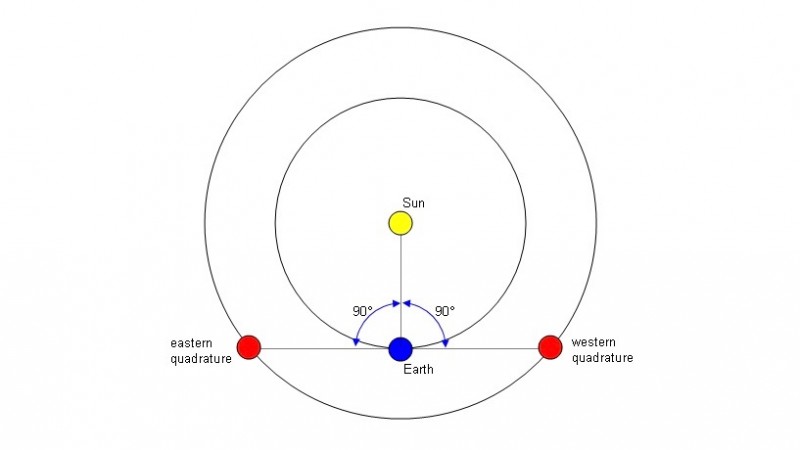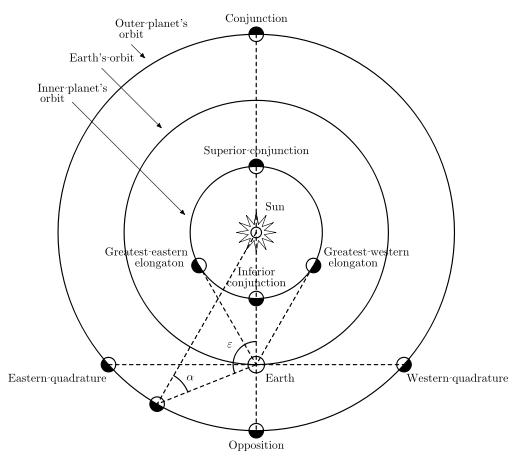
If you could look down on the solar system plane from above today – July 6, 2017 – you’d see that the sun, Earth and Jupiter form a 90o angle in space. Astronomers say that Jupiter is at eastern quadrature at this juncture. That is, it’s 90o east of the sun.
Geometric markers such as these, for planets and moons in our solar system, are more than just academic. They indicate where you can find these bodies in our sky – and serve as hallmarks in our monthly or yearly observations of neighboring worlds. For example, when the moon is at eastern quadrature – or 90o east of the sun – we say the moon is at the first quarter phase. At such times, the moon is at its highest in the sky at about 6 p.m. local time.

And so it is with Jupiter at eastern quadrature. This bright planet is now approximately highest in the sky at 6 p.m. (7 p.m. daylight-saving time). You can easily spot Jupiter because it is the brightest star-like object in the July evening sky. Jupiter will set around the midnight hour, midway between sunset and sunrise.
Enjoying EarthSky so far? Sign up for our free daily newsletter today!
About three months ago – on April 7, 2017 – Jupiter was at opposition. It was opposite the sun in Earth’s sky, or 180o from the sun. If you had looked down on the solar system at that time, you would have seen the sun, Earth and Jupiter making a straight line in space. At opposition, a heavenly body climbs highest in the sky at midnight.
Opposition and quadrature can happen only to solar system bodies that orbit the sun outside of Earth’s orbit. Planets that orbit the sun inside of Earth’s orbit (Mercury and Venus) can never reach opposition or quadrature. Instead, they always remain near the sun as seen from Earth. So we see them either in the east before sunrise, or in the west after sunset.
Jupiter’s oppositions and quadratures enabled the innovative astronomer Copernicus (1473-1543) to compute Jupiter’s distance from the sun. He did this by charting Jupiter’s (and the Earth’s) change of position from opposition to quadrature. All the while, Copernicus presumed that Jupiter and Earth both orbit a central sun.
By using the astronomical unit – the Earth-sun distance – as his baseline, Copernicus relied upon the magic of geometry to figure out that Jupiter is over five times the Earth’s distance from the sun!
Want to know more? Click here

Bottom line: Look for Jupiter – the brightest object in the evening sky, with the exception of the moon – as it stands at eastern quadrature, or 90 degrees east of the sun, on July 6, 2017. At eastern quadrature, Jupiter is highest in the sky around 6 p.m. local time.











